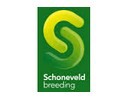After the bedding plant season many Cyclamen plants are being planted.
Below is a list of topics for review when potting your cyclamen.
- Growing Area
- Water quality
- Insects
- Greenhouse climate
- Soil Media
- Plant height after potting
- Watering
- Fertilization
Clean and disinfect growing area
It is always wise to start with a clean and disinfected growing area. Common disinfectants include Menno Ter forte or Menno Clean of Chlorine.
Water quality
Check if the water disinfection system is working properly. It is a good idea to check your water storage and make sure it is clean from the presence of diseases. Hydrogen peroxide works well for a standard disinfection. For Cyclamen where fusarium is a possible threat it is suggested to use a stronger compound like chloride to prevent the infection. (note: you cannot use chloride and hydrogen peroxide at the same time in one system).
Insects
Make a plan for the crop protection and utilize biological treatments when possible. Control on insect pressure in and around your greenhouse can be aided by removing all weeds in the greenhouse and by cutting/removing the weeds and grass around your greenhouse. This will help to delay an infection. When an infection of e.g. Duponchelia is to be expected the use of feromon traps and frequent scouting and spraying may be helpful.
Greenhouse climate
It is recommend to place white paint on the greenhouse roof before transplanting. Depending on the presence of a shading system, this can be a thinner or thicker layer. This will help prevent too high of light levels on the plants right after potting. During the first weeks the average daily temperature (ADT) should be a minimum of 18° C to ensure good root/plant development.
Soil Media
Choose a good quality substrate that is airy enough to let the plant dry quick enough. This is especially important for the later potting weeks. This can help to keep the top of the soil dry and help prevent and/or control Botrytis. It is suggested to check the EC and pH values of the substrate before transplanting.
Planting depth
Make sure the soil media is filled completely to the edge of the pot. When planting be careful of planting too deep as this may increase the risk of the Botrytis. For Mini and Midi types keep the corm just above the substrate level. For Large flowered varieties the corm should be half in the substrate.
Watering and Fertilization
During the first weeks after transplanting keep the soil moist, to allow the plants to settle. Hereafter, keep the plants a little dryer to improve the root development.
Depending on the starting EC in the substrate it is recommended to fertilize frequently with a balanced fertilizer and additional Calcium. The target EC level in the substrate is 0,4 – 0,8 mS/cm (based on the 1:1,5 extraction protocol). Depending on the desired finished plant size, you can (within this range) apply less or more fertilizer.
It is recommended to check frequently the EC and pH level of the soil media to achieve optimum results.
For more information: Schoneveld Breeding
Schoneveld Breeding
info@schoneveld.nl
www.schoneveld.nl
